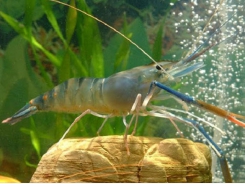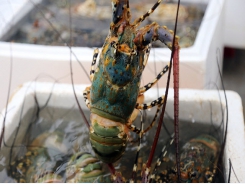Việt Nam needs solutions promoting sustainable seafood exports to the EU: experts

HÀ NỘI — Việt Nam needs to strengthen measures to achieve the sustainable development of seafood exports to the EU market, especially after the EVFTA comes into effect, according to experts.
The country gained US$183.4 million in seafood export value to the EU in two months after the EU-Việt Nam Free Trade Agreement (EVFTA) came into force, said Phan Thị Thu Hiền, lecturer and expert on EU market from the Foreign Trade University.
“The EUTR1 certificate of origin (C/O) applications of exported seafood accounted for nearly 80 per cent of total C/O applications, ranking second in the top export commodities,” Hiền said.
Vietnamese exporters have had good compliance with the rules of origin to utilise the EVFTA, she said.
Meanwhile, the Ministry of Industry and Trade (MoIT) has also supported Vietnamese firms in complying and successfully applying the preferential EUTR1 C/O, including introduction and communications about the EVFTA and its rules of origin, training and consultancy, help desks, and manual and e-guidance publications.
The EU is one of the biggest export markets of Việt Nam’s fish and fish products with a value of US$1.3 billion in 2019, accounting for 15.1 per cent of the total seafood export value of Việt Nam.
However, Việt Nam’s seafood products exported to the EU are mainly semi-processed products, according to the Việt Nam Institute of Economics and Fisheries Planning.
In addition, the EU is a large market with many import orders while Việt Nam has not developed production and processing chains so it has missed many chances of exporting seafood to the EU.
To have efficient and sustainable seafood exports to the EU, the Government and competent authorities need to have training programmes and public-private dialogues about IUU and the EVFTA, Hiền said.
They need to modernise and standardise documentation and fishery statistics, she said. They should also apply information technology (IT)-driven risk management and control and develop IT infrastructure, applications and platforms.
For local farmers and export processing firms, she said, they should know about fundamental principles of the EU’s IUU regulations, preventing violations. Those could ensure efficient seafood exports to the EU market.
They should also actively participate in training courses about IUU and the EVFTA.
Bách Văn Hạnh from the Directorate of Fisheries under the Ministry of Agriculture and Rural Development (MARD) said the directorate has enhanced control for imported raw materials of seafood to meet requirements on product origin.
It has improved existing processes to ensure traceability in processing plants and monitor certified materials for processing in factories, he said.
Besides that, Việt Nam should solve problems relating to residue levels of banned substances in export seafood products, said Đào Trọng Hiếu from the MARD’s Agricultural Product Processing and Market Development Department.
It needs to complete standards and regulations for Việt Nam's seafood products, meeting the EU market regulations, he said.
Việt Nam should also take full tax incentives from the EVFTA to promote seafood exports to the EU.
If Việt Nam removes the yellow card warning about implementing the IUU regulations and take full tariff incentives under the EVFTA, its seafood exports to the EU in the next five years are expected to reach between $1.2-1.5 billion each year, Hiếu said.
Có thể bạn quan tâm
Phần mềm

Phối trộn thức ăn chăn nuôi

Pha dung dịch thủy canh

Định mức cho tôm ăn

Phối trộn phân bón NPK

Xác định tỷ lệ tôm sống

Chuyển đổi đơn vị phân bón

Xác định công suất sục khí

Chuyển đổi đơn vị tôm

Tính diện tích nhà kính

Tính thể tích ao hồ




 Will seafood exports reach over US$ 8 billion?
Will seafood exports reach over US$ 8 billion?  Phú Yên - The capital of lobster suffers…
Phú Yên - The capital of lobster suffers…